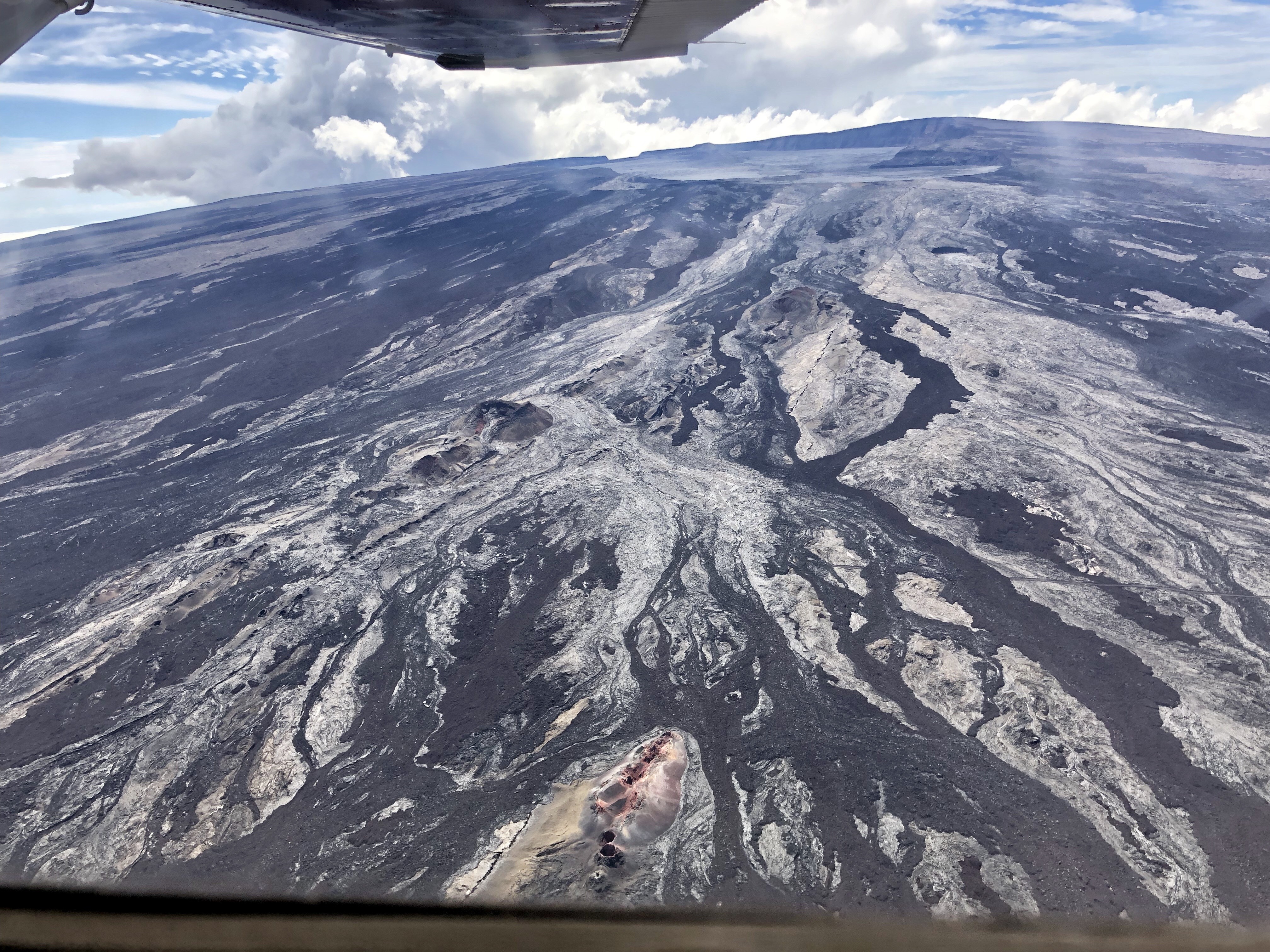
It is not unusual to see this much tilt at Kīlauea, but there has never before been a tilt signal that could be attributed to changes in Mauna Loa’s volcanic system. Beginning on March 23, a tiltmeter near Mauna Loa’s summit recorded a change in tilt of about 5 microradians. The third observation is the smallest but may be the most meaningful. This is very unusual for a magnitude-3.2 earthquake and indicates that the fault may have slipped all the way up to the ground surface. The second observation was the occurrence of a small, shallow magnitude-3.2 earthquake in Mokuʻāweoweo on March 6. Using satellite radar, we were able to see that the earthquake caused nearly 10 cm (4 inches) of subsidence in a small portion of the caldera. This is small compared to amount of expansion that has taken place, but the sudden reversal is new behavior that hasn’t been observed at Mauna Loa with modern instruments.

The most recent contractional episode shortened the distance across Mauna Loa’s summit caldera (Mokuʻāweoweo) by only about 1.5 cm (0.6 inches). The first is that the direction of deformation at Mauna Loa’s summit has had reversed twice since October 2020, switching back and forth from an outward (expansive) direction to an inward (contractional) one. Three observations from the past several months are particularly interesting (to a geophysicist). The higher rate of sampling and greater sensitivity of the instruments gives us the means to see much more detail. As we continue monitoring Mauna Loaʻs unrest, we also hope to learn much more about how the volcano behaves and look for clues to the next eruption. Today, HVO monitors Mauna Loa deformation using over 30 GPS stations, seven tiltmeters, and regularly analyzed satellite radar data. Technology has changed a lot in the 37 years since Mauna Loa’s last eruption. These changes are small, sometimes barely above the noise, but may be telling us that the magma system is evolving in important ways. In the past six months, there has been an uptick in earthquake activity on Mauna Loa’s west flank and changes in the pattern of deformation at its summit. Summit inflation began again in 2014, this time together with shallow earthquakes, and has continued ever since, with only a short break in 2018.

This behavior continued for several months before Mauna Loa returned to its background state. At that time, Global Positioning System (GPS) instruments showed inflation of the volcano’s summit reservoir system accompanied by vey deep earthquakes.
Mauno loa volcano parts series#
Recent changes in deformation and seismicity on Mauna Loa are the latest in a series of “rumblings” that arguably began in 2004. Nonetheless, Mauna Loa will certainly erupt again someday and extensive monitoring efforts of the USGS Hawaiian Volcano Observatory (HVO) have continued throughout the decades. This week’s article was written by Hawaiian Volcano Observatory research geophysicist Ingrid Johanson. Geological Survey Hawaiian Volcano Observatory scientists and affiliates.
Mauno loa volcano parts update#
Volcano Watch is a weekly article and activity update written by U.S.


 0 kommentar(er)
0 kommentar(er)
